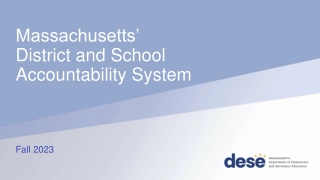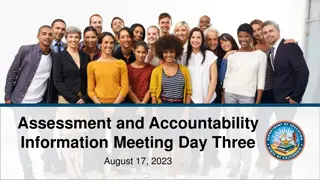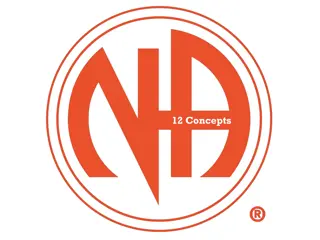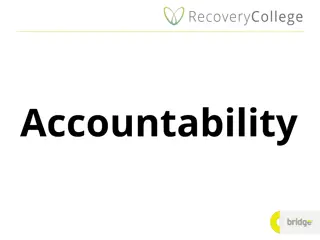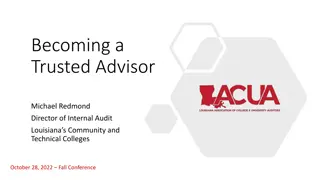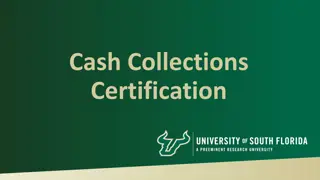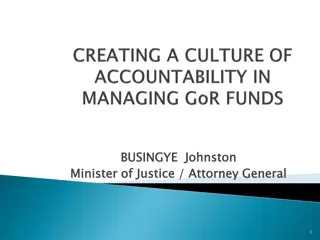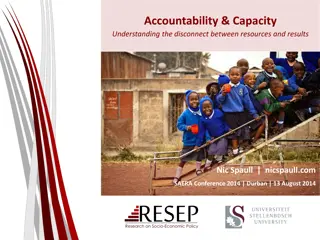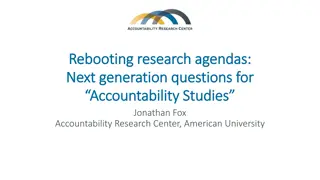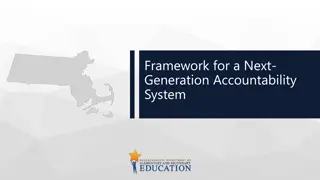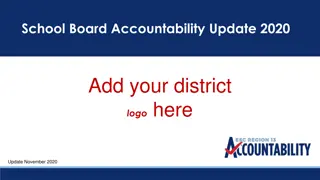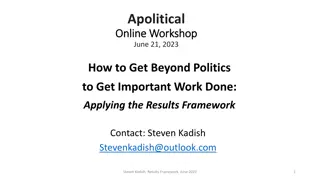Results Driven Accountability
A comprehensive approach to data analysis, goal setting, and action planning for achieving measurable results. Stay accountable and achieve your objectives.
Download Presentation

Please find below an Image/Link to download the presentation.
The content on the website is provided AS IS for your information and personal use only. It may not be sold, licensed, or shared on other websites without obtaining consent from the author. Download presentation by click this link. If you encounter any issues during the download, it is possible that the publisher has removed the file from their server.
E N D
Presentation Transcript
TODAYS OBJECTIVES & NORMS Objectives Norms Review and analyze multiple data sets Determine data progression/connection statements Determine priority challenges from data analysis Complete a root cause analysis Develop goals Develop an action plan Listen with Engagement Honor Confidentiality of Data Honor Private Think Time Everyone has a Voice Be Respectful of All Comments Take Care of Your Needs Do Not Take it Personally
ROLES AND NAVIGATION FOR DATA ANALYSIS Assign one team recorder Idea for large groups Keep all involved Break into small groups Analyze Return to large group to discuss and summarize on template Assign specific data sets to team members Keep discussions for template at building level
INTERACTIVE TEMPLATE TIPS All buildings using same template It s important to stay in your own row Having recorder helps control this If the box turns gray, someone is typing in that cell If you accidentally type over someone else, click out of cell and click undo As we are analyzing the data, check for similarities Possible areas for cross building collaboration
YEAR 2 & 3 SIGN-IN AND REFLECTION Sign-in and answer reflection questions The purpose of this is to get everyone into data analysis mode and start to function as a data team. Review Last year s Goal, Action Plan and Validation (linked on your agenda) Document any discussion on the data analysis template, and then answer the remaining reflection questions.
IfThen Warm Up Activity If my pet could talk, then If my friend orders pineapple on our pizza, then If I could breathe underwater, then If my favorite movie was real life, then
WHY ARE WE HERE Risk Analysis Rubric This tab guides you through analyzing the Risk Analysis Rubric, which provides an overview of your district s scores. Can your team explain what each of these indicators are? If not, there are indicator TA sheets linked within each indicator s tab and ask your RDA Coach any questions you might have. *Please note: these sheets are currently being updated, so some have not been included. Team share out: Are there any question or concerns about this data set?
WHO ARE OUR STUDENTS SPP/APR Reports This tab guides you through analyzing a couple of data sets regarding Required Data Sets: Big Picture - Data Drill-Down 2A and Snapshot 2 and 3 This tab guides you through analyzing SPP/APR Reports. This data comes from SPP/APR Indicator data and Dec. 1 Child Count
DATA PROGRESSION If your team were to select a piece of data from this section for a goal, what data piece stood out to you? Write it in a data statement (23% of students are in the general education classroom) How does this data connect back to "Why Are We Here?" What are some possible action steps that could be taken to impact this data? What would be the overarching goal you're hoping to impact with these action steps?
INDICATOR 1: GRADUATION RATES This tab guides you through analyzing a couple of data sets regarding Indicator 1: Graduation Rates in your district. Data Sets: Snapshot 7, Data Drill-Down 7A - SPP/APR Early Warning Report - SD-STARS (this data comes from Infinite Campus)
DATA PROGRESSION If your team were to select a piece of data from this section for a goal, what data piece stood out to you? Write it in a data statement (23% of students are in the general education classroom) How does this data connect back to "Why Are We Here?" What are some possible action steps that could be taken to impact this data? What would be the overarching goal you're hoping to impact with these action steps?
INDICATOR 3: SD ASSESSMENT SCALE SCORES AND TARGETS This tab guides you through analyzing a couple of data sets regarding Indicator 3: SD Assessment Targets in your district. Data Sets: Indicator 3 - Quick Look Report 4A for all grades - SPP/APR SD Assessment Scale Scores - SD Assessment Portal SD Assessment Targets - SD Assessment Portal Both organized by Grade Level for ELA & Math Targets are comparing performance on each target to the performance on the test as a whole in the district - so a + for a target means students performed better on that target compared to the test as a whole
DATA PROGRESSION If your team were to select a piece of data from this section for a goal, what data piece stood out to you? Write it in a data statement (23% of students are in the general education classroom) How does this data connect back to "Why Are We Here?" What are some possible action steps that could be taken to impact this data? What would be the overarching goal you're hoping to impact with these action steps?
INDICATORS 6 & 7: PREK LRE & ACQ. OF K AND S This tab guides you through analyzing a couple of data sets regarding Indicators 6 & 7: Child Outcomes Summary. Data Sets: Data Drill Down 8A and Snapshot Report 8 - SPP/APR Data Drill-Down 9A & Snapshot Report 9 - SPP/APR Indicator 7 Child Outcomes Summary - SD-STARS (this data comes from Infinite Campus) Children with No Assignments - SD-STARS (this data comes from Infinite Campus) If you have questions, refer to the TA guide linked on the data analysis template.
DATA PROGRESSION If your team were to select a piece of data from this section for a goal, what data piece stood out to you? Write it in a data statement (23% of students are in the general education classroom) How does this data connect back to "Why Are We Here?" What are some possible action steps that could be taken to impact this data? What would be the overarching goal you're hoping to impact with these action steps?
INDICATOR 14C: POST-SCHOOL OUTCOMES This tab guides you through analyzing a couple of data sets regarding Indicator 14c: Post-Secondary Outcomes. This exiter data is reported by the district - students are contacted by either the district or BHSU a year following exiting the district. Data Sets: Longitudinal Report - Indicator 14 Site
DATA PROGRESSION If your team were to select a piece of data from this section for a goal, what data piece stood out to you? Write it in a data statement (23% of students are in the general education classroom) How does this data connect back to "Why Are We Here?" What are some possible action steps that could be taken to impact this data? What would be the overarching goal you're hoping to impact with these action steps?
GOAL PRE-WORK This tab guides you through compiling all of your findings so far. Considering all of the data you ve analyzed so far, answer the Goal Pre-Work questions. After these pre-work discussions, complete the If Then activity. Examples might include: If students are not meeting [target], then district needs If teachers don t have access to training for [insert topic], then
SMART GOAL PRE-WRITING After these pre-work and if then discussions, complete the SMART goal section: Specific - what specifically is your team wanting to impact? Measurable - what are you going to use to measure the progress of this goal? Achievable - what would be an achievable change for your team within your chosen timeline? (indicator measurement considers at least 2% to be growth) Relevant - what is the relevance of working towards this improvement? Time-bound - what is the timeline for completing this goal? (set for at least 3 years from now)
GOAL PRE-WORK SMART Examples: Specific - We want to increase our district SD General Assessment proficiency scores - currently at 11% for Math and 13% for ELA Measurable - SD General Assessment scores Achievable - We want to increase our proficiency rates by a minimum of 5% Relevant - Improving ELA and Math outcomes for our students Time-bound - We want to achieve this by Spring of 2025
PARAPROFESSIONAL SURVEY This tab guides you through analyzing the results of the perception survey sent out to certified staff. Data Sets: o Paraprofessional Survey Results
PERCEPTION SURVEY This tab guides you through analyzing the results of the perception survey sent out to certified staff. Data Sets: Perception Survey Results For Year 2 & 3 Schools: Perception Survey Comparison
DATA PROGRESSION If your team were to select a piece of data from this section for a goal, what data piece stood out to you? Write it in a data statement (23% of students are in the general education classroom) How does this data connect back to "Why Are We Here?" What are some possible action steps that could be taken to impact this data? What would be the overarching goal you're hoping to impact with these action steps?
SYSTEMIC COLLABORATIVE DATA PROCESS: ROOT CAUSE ANALYSIS
ROOT CAUSE ANALYSIS: OVERVIEW
ROOT CAUSE ANALYSIS A Root Cause Analysis is a method to explore a problem in a systematic way to gain a consensus about what most likely is causing the problem and what course of actions should be taken. Once a cause has been identified, there is a realistic hope that it can be reduced or dissolved in the future Preus 2003 Probable Root Cause Not definitive until affected Monitoring and Evaluation Required
ROOT CAUSE ANALYSIS OVERVIEW Connect Data Progression with Data Analysis Root Cause Validation Goal Writing Develop Priority Challenge Statement Strategies Input Gallery Walk Circle Map Activity Develop Building Action Plans ICEL Activity
CONSENSUS Root Cause Analysis activities will be done in building teams What is consensus to your team?
Root Cause Analysis: CHALLENGE STATEMENT
WHAT IS A CHALLENGE STATEMENT? Drawn from trends that are a concern for the school/district Challenge Statements are NOT what caused the performance Should be specific statements about student performance Statements of what the performance IS Root causes are always focused on at least one challenge statement Provide the strategic focus for improvement efforts
CHALLENGE STATEMENT Based on your Data Progression Connection 2-3 Data points that can be related to each other Write an overall challenge statement connecting all data used Example: We have 14% more students in the resource room placement compared to the state average. Our staff was 10% lower in agreement to the district percentage in regards to implementing students accommodations and modifications effectively.
CIRCLE MAP ACTIVITY STEP 1 One Circle Map poster paper for each challenge statement Smallest circle write priority challenge statement Larger Circle List All Possible Explanations for Challenge statement Use Sticky Notes Capture ALL Voices More is better Explanations will guide towards a Root Cause
ICEL ACTIVITY As a team, organize all sticky notes into the following four categories of factors: Instruction Curriculum Environment Learner To help do determine which categories, these questions may be helpful: ICEL Supporting Questions Document Once sorted, consider if there s an area that needs more attention.
CIRCLE MAP ACTIVITY STEP 2 Building team Select 2 Best Explanations Remove explanations: Similar/duplicates Things we cannot change Outside the schools circle of influence Opinions Not based on data or data cannot support it Can not be tested or verified Keep explanations: Things we can change or impact (instructional strategies) Within the schools circle of influence (district curriculum/interventions) Supported by data
Root Cause Analysis: DISCOVERING A ROOT CAUSE
WHEN IS A ROOT CAUSE, A ROOT CAUSE? Criteria: Root cause or Contributing Cause? Would the problem have occurred if this cause had not been present? Will the problem reoccur even if the cause is corrected? If you answer no to both questions, this is a possible root cause. If yes to either question, then it is a contributing cause. Ammerman 2012 Can be difficult, if not impossible to identify a single, specific cause
DETERMINING POSSIBLE ROOT CAUSE Looking at the causes selected from the Circle Map activity, ask yourselves the following questions: Would the problem have occurred if this cause had not been present? Will the problem reoccur even if this cause is corrected? If you answer no to both questions, this is your possible true root cause. If you answer yes to either or both of these questions, ask yourselves why this cause might be happening, and then ask yourselves the questions again.
Root Cause Analysis: GOAL WRITING
GOAL WRITING Remember your SMART Goal Pre-Work: Specific Measurable Achievable Relevant Time-Bound Use your Challenge statement and two root causes to update these SMART pieces and write a draft goal.
GOAL WRITING Examples: Priority Challenge Statement: In the perception survey, 22% of the staff said that they did not fully understand how to effectively implement modifications and accommodations, and current proficiency rates across the district are 16% for ELA and 11% for Math Goal: By the Spring of 2025, we will increase SD General Assessment proficiency rates by a minimum of 5% in both ELA and Math. Potential Action Steps: Provide professional learning for teachers regarding accommodations and modifications Review current LRE placements and consider how to increase inclusion
ROOT CAUSE ANALYSIS: STRATEGIES INPUT GALLERY WALK
STRATEGIES INPUT GALLERY WALK Write the goal on the top of your poster paper Using sticky notes: Write down ANY - idea, task, comment, question, strategy, intervention, anything that you feel could positively impact or move the needle forward! Gallery walk w/sticky notes each individual writes their own Write sticky notes for your goal and all other teams
STRATEGIES INPUT GALLERY WALK Back with your Building Review and organize sticky notes Review previous solutions/strategies on template Discuss strategies Document these on data analysis template when done










